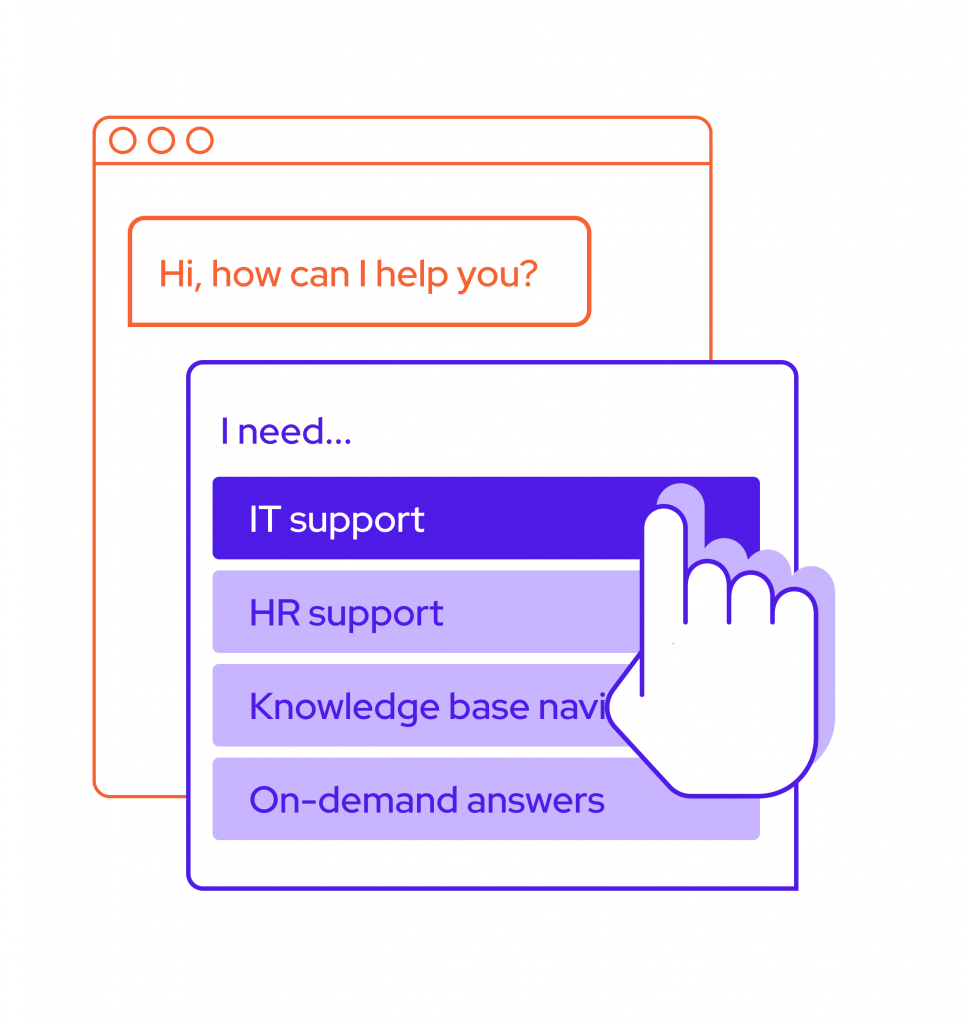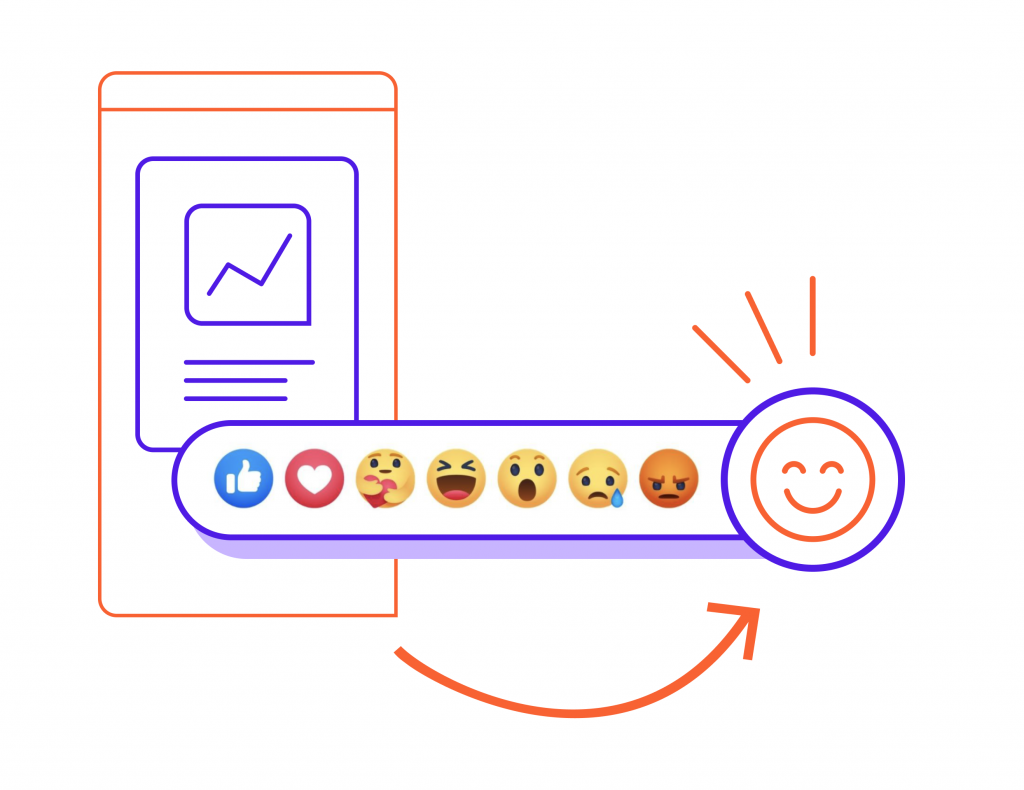
We’ve compiled seven of the top intranet trends of 2022 – our must-have recommendations for any modern intranet.
From custom social features to tools for hybrid working, modern intranets offer more features than ever. The options available today for intranets easily keep pace with other platforms and software that companies might be considering, all while continuing to offer the same security and reliability.
Companies are competing for talent and employee experience is going to remain a top priority. The good news is that there are plenty of features that companies can leverage to positively impact their employee engagement.
Integrations

Modern intranets are fully customisable and can be connected to a broader information ecosystem. The growing number of API-connected third-party integrations has especially opened up new possibilities for going beyond traditional intranet features. This is a key aspect of creating dedicated and cohesive digital workplaces.
With many integrations, the information can appear in the intranet as a widget so that the user experience remains frictionless. For example, Vimeo-hosted video content can be integrated directly into the intranet, where users can like, comment on, or share it. Other integrations might be with Microsoft Teams or Google G Suite, in-house systems for scheduling and rostering, or HR, e-learning, or customer case management systems – to name just a few.

Chat:
Seamless and user-friendly chat features go beyond intranet trends – they are fast becoming a hallmark of modern intranets. When IT or HR support can be provided via live chat and kept internal, communicators accessing their services get the help they need without having to leave the intranet environment. Or, an added chatbot can help users navigate information-rich areas of the intranet, such as the knowledge base.
These features reach their maximum value when adjusted to your specific needs. For example, you might have preferences for the routing of user inquiries, the database that a chatbot will access, the operating hours of live chat, or how the chat widget will interact with the design of the overall user experience.
Social features – for a more social intranet

Social dialogue customizations encourage interaction between employees and build brand affinity. The features that a company chooses to include should be reflective of its company culture and social organization.
For example, users might engage with content within the intranet using not just a thumbs-up or a heart, but custom reactions. These custom reactions can be designed to underscore brand values or even play a role in operational processes – such as a button that says “Count Me In!” as a way to sign up for events or projects.
Companies that prioritize collaborative learning might choose to set up topic-based conversation hubs for employees. Companies that value personal connection might choose to establish social channels where employees can share their own content, like photos or posts, to a shared feed.
Rich content and better search
Content management systems can be fully integrated into modern intranets. With the high-quality CMS tools out there, your intranet content experience can be as engaging and dynamic as the customer experience offered by top-tier media platforms.
Intranets with CMS customizations can host content enriched with images, video, audio, links, and documents. Content publishing and management processes are also easier than ever, thanks to templates, automations, analytics, and other improved tools. With streamlined publishing and varied possibilities for engaging with their team members, companies aren’t limited by labor-intensive processes or unsupported content types.
It’s not only the quality of the content itself that can be elevated. Custom intranets also offer improved discoverability and search result relevance. Features like search filters, integrated search feedback, and various display options for search results are just a few of the top intranet trends of 2022.
Some intranets make use of search features in Microsoft 365, while others use technology native to solutions like Unily or Sharepoint. Intranets with improved search can have a strong positive effect on the digital employee experience, no matter which solution.

Personalisation
Across the board, personalization is one of the best ways that companies can use their intranet to design an excellent user experience. From search results and widgets to resources and departmental communications, intranets let companies implement a clear, strong, and tailored strategy – for content, communications, and employee management.
For example, users can “follow” certain topics in their news feed, mark resources as “favorites” for easy access, or save links. Personalized task lists and customized news banners make sure that employees see the information they need to know. These kinds of features are familiar to users from their experiences elsewhere online, and they’re just as valuable in the intranet context.
Accessibility and inclusive design

It’s exciting to see the increasing focus on accessible and inclusive intranets. 2022 trends aside, accessibility is vital in order for companies that want to attract and retain talent. Inclusive design makes companies more attractive as employers, both for individuals who may need specific accommodations and for people who value working in an inclusive workplace.
For workers with changing needs, an intranet that has been built with inclusivity in mind could anticipate accessibility challenges before they arise–which is also great for employee retention. People with low vision, no vision, or motor-skill limitations often need just minor accommodations in order to continue delivering high-quality work.
Design adjustments like contrasting text and backgrounds and larger font sizes are simple, user-friendly improvements. Meanwhile, backend features can be set up to render pieces of content as HTML so that screen readers can read them.
Built for hybrid and remote working
Despite some companies encouraging a return to in-person work after months of working from home, it’s clear that remote work is still an important part of the conversation in 2022. Employees want the option to work from home, for example, in a hybrid or asynchronous working model.

In some sectors, especially those with frontline workers, companies are traditionally less likely to work from home. For these organisations, a well-designed intranet can be a deciding factor between the success and failure of hybrid work or remote work. Because customised intranets can provide a fully digital workplace, companies can streamline and significantly improve their employee experience, even if they employ a distributed workforce.
Regardless of the industry, intranets can be a cornerstone of any company’s remote work model. With a mobile-optimized intranet platform, users can access resources and information across devices, on-demand. And even core operational processes, like request forms or new employee onboarding, can be managed via the intranet platform.




